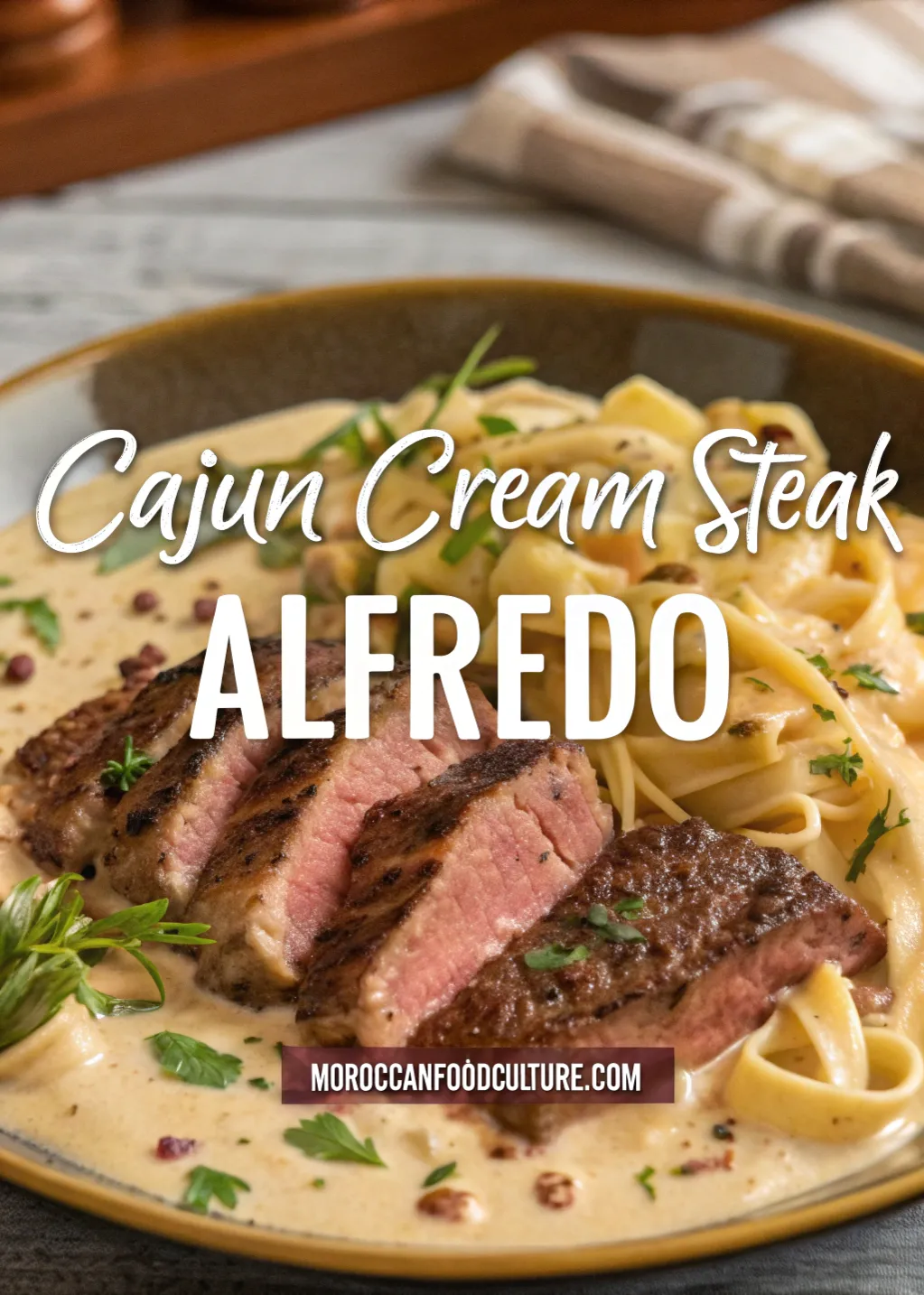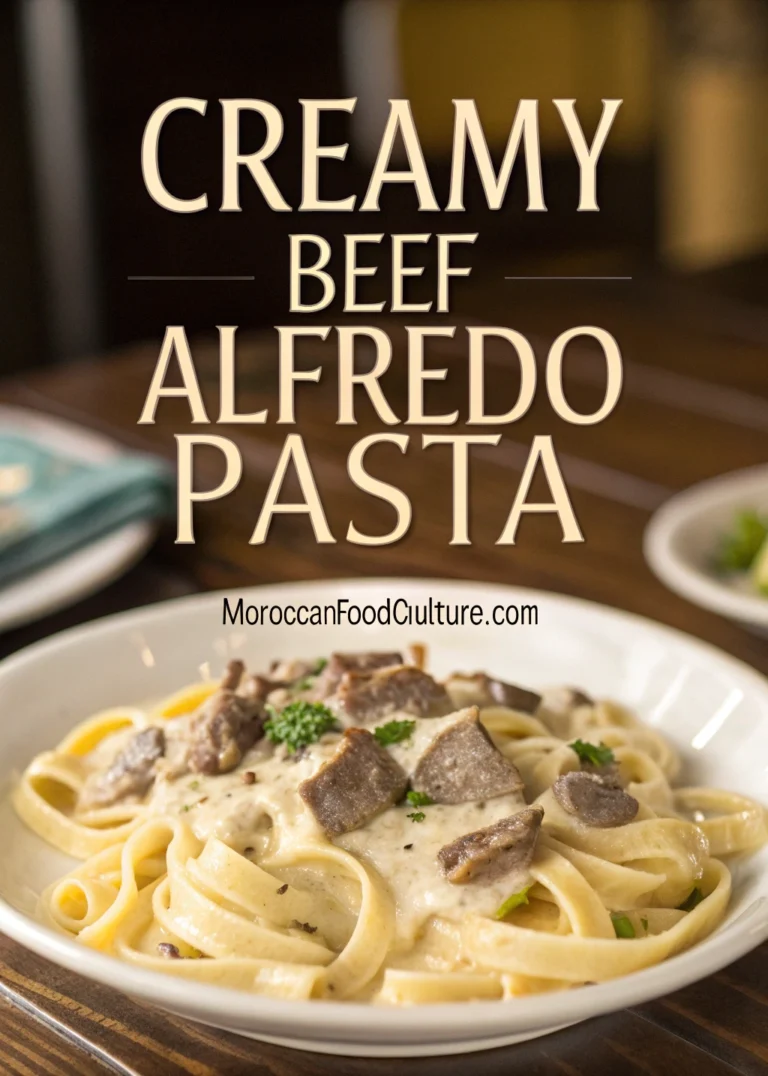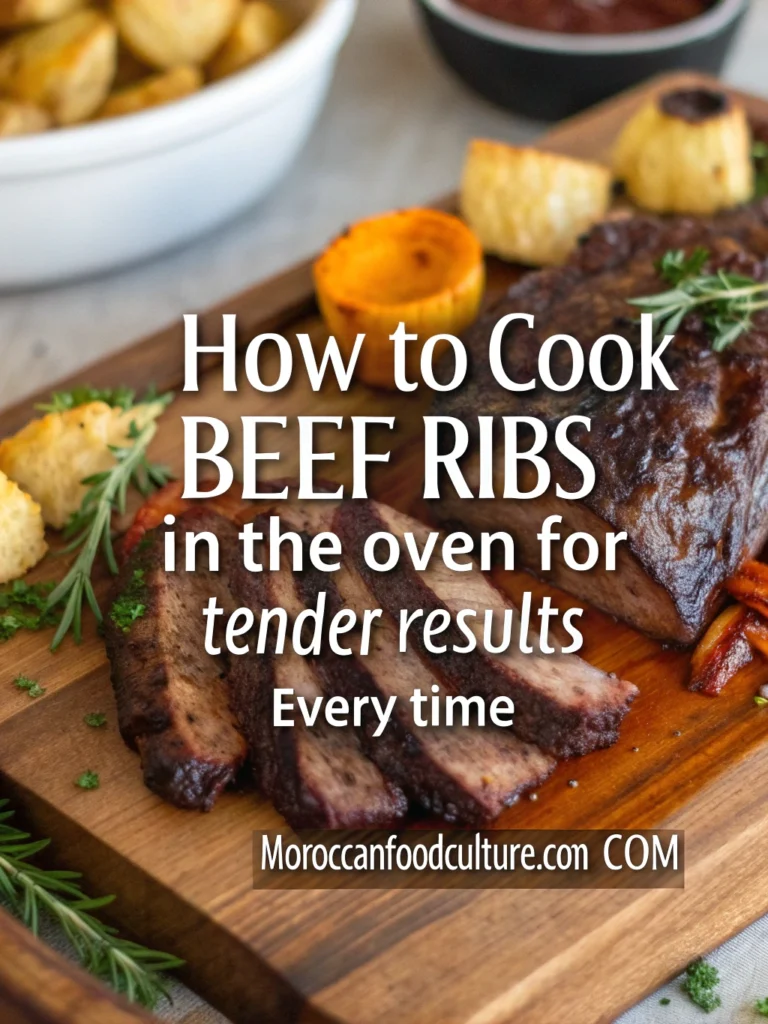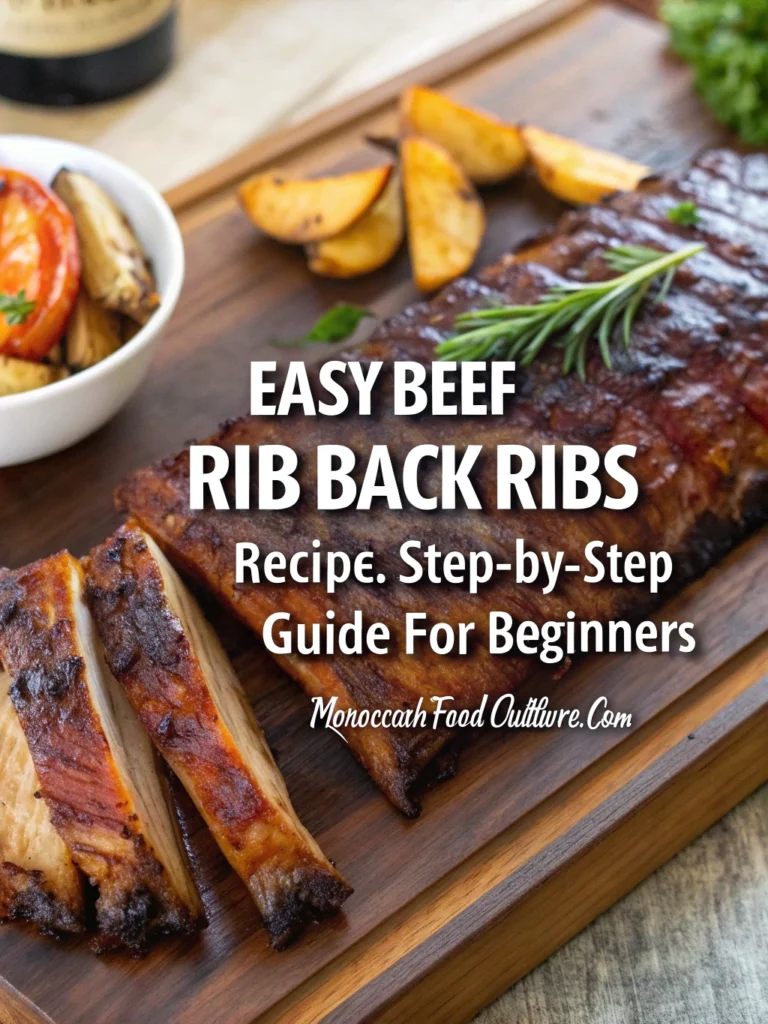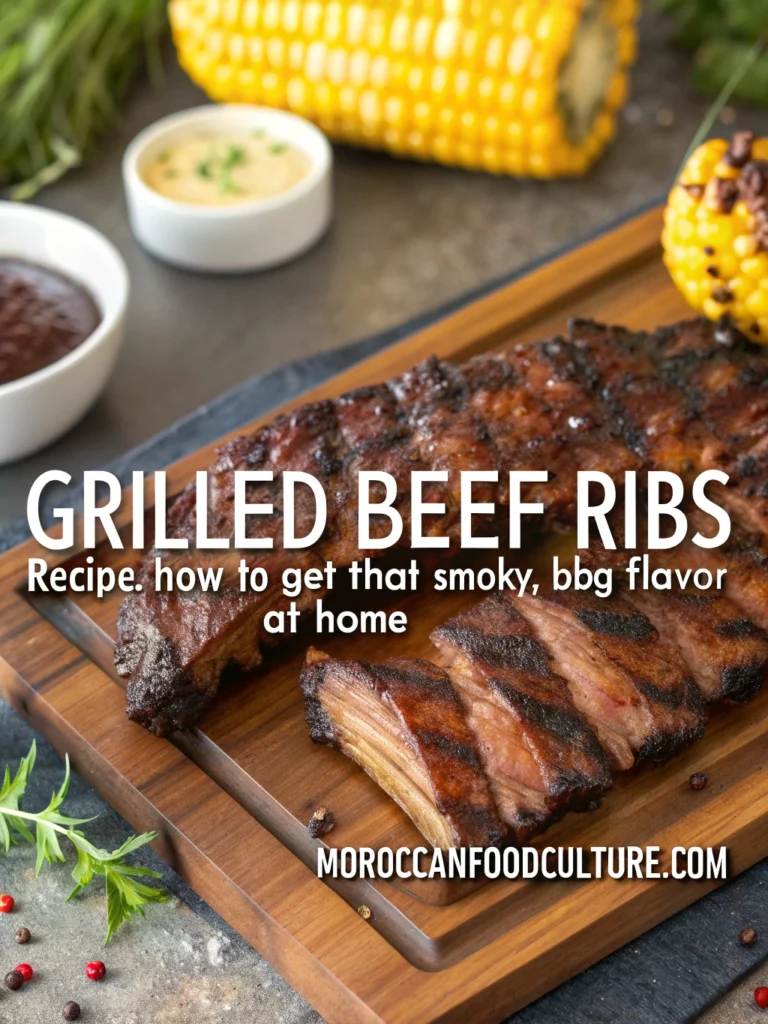Cajun Cream Steak Alfredo: A Spicy Southern Twist on Classic Italian Comfort Food
Have you ever found yourself caught between cravings—torn between the velvety comfort of Italian pasta and the fiery kick of Southern cuisine? That first memorable encounter with Cajun Cream Steak Alfredo might have happened in a dimly lit restaurant where the aroma of spices and butter danced through the air. Or perhaps it occurred in a friend’s kitchen where experimental cooking birthed something extraordinary.
For me, it was a rainy Tuesday when nothing in the pantry seemed inspiring. With some leftover steak, cream, and a bold decision to merge my spice rack favorites with Italian tradition, something magical materialized on my plate. The silky texture of classic Alfredo sauce elevated by robust Cajun seasonings and tender strips of beef created a harmony that felt like discovering a secret culinary handshake between Louisiana and Rome.
Table of Contents
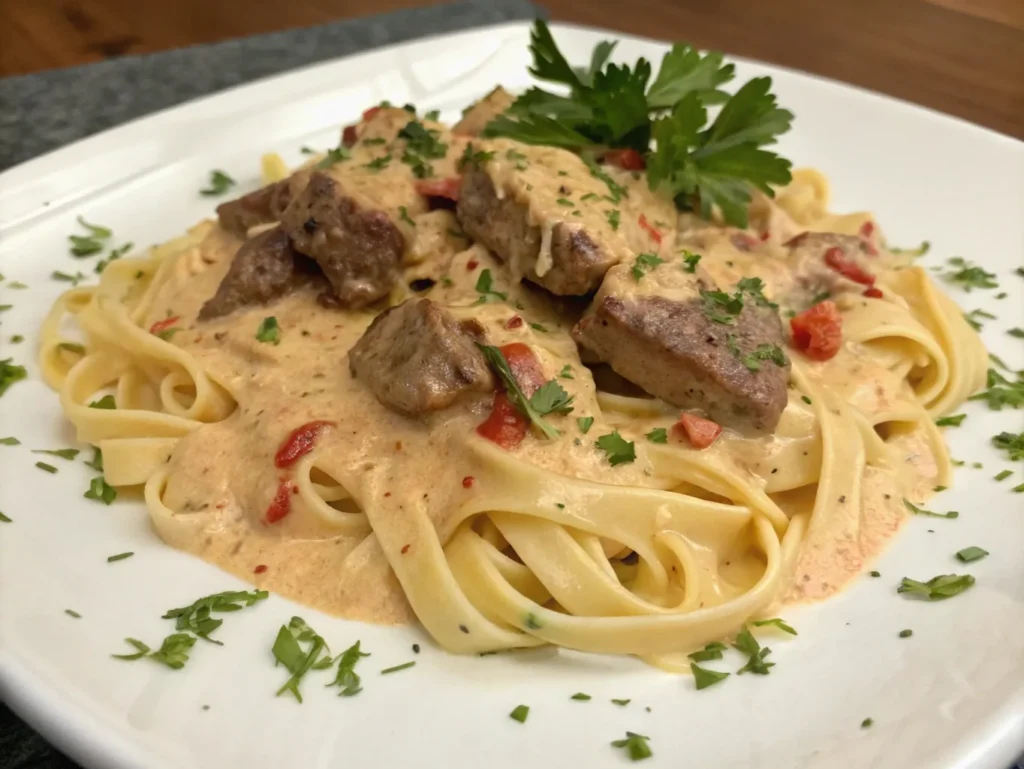
The Magic of Cajun Cream Steak Alfredo
This fusion masterpiece delivers something remarkably rare—a perfect marriage of two distinct culinary worlds without sacrificing the integrity of either. The richness of traditional Alfredo provides an ideal canvas for showcasing the complex spice profile that defines Cajun cooking, while tender strips of steak add substantial heartiness that transforms this dish from side to centerpiece.
What truly distinguishes this creation is its versatility. Extravagant enough for special celebrations yet straightforward enough for weeknight dinners when you deserve something extraordinary. The depth of flavor might suggest hours of simmering and complex technique, but the reality offers a merciful contradiction—you’ll have this impressive creation from stove to table in under 45 minutes.
What You’ll Need: Ingredients for Cajun Cream Steak Alfredo
Gathering quality ingredients forms the foundation of this remarkable dish. Freshness matters tremendously, particularly regarding the dairy components and protein.
| Ingredient Category | Items |
|---|---|
| Protein | • 1.5 lbs ribeye or sirloin steak, thinly sliced<br>• Optional: 1 lb large shrimp, peeled and deveined (for surf and turf variation) |
| Pasta | • 1 lb fettuccine pasta<br>• Salt for pasta water |
| Cajun Spice Mix | • 2 tbsp paprika<br>• 1 tbsp each: garlic powder, onion powder<br>• 2 tsp each: dried oregano, dried thyme<br>• 1 tsp each: black pepper, white pepper<br>• ½-1 tsp cayenne pepper (adjust for heat preference) |
| Alfredo Sauce Base | • 2 cups heavy cream<br>• 4 tbsp butter<br>• 3 cloves garlic, minced<br>• 1 cup freshly grated Parmesan cheese<br>• ¼ cup cream cheese (for extra creaminess) |
| Vegetables & Aromatics | • 1 red bell pepper, sliced<br>• 1 small onion, thinly sliced<br>• 2 stalks celery, finely diced<br>• 2 tbsp fresh parsley, chopped<br>• 2 green onions, sliced |
Kitchen Equipment Needed
Beyond ingredients, having the right tools ensures your cooking experience flows smoothly:
- Large pasta pot
- Heavy-bottomed skillet or wok (cast iron works beautifully)
- Sharp chef’s knife and reliable cutting board
- Measuring cups and spoons
- Tongs for pasta handling
- Box grater for fresh cheese
Preparing the Perfect Cajun Cream Steak
Seasoning Your Steak with Cajun Spices
The cornerstone of outstanding Cajun Cream Steak Alfredo lies in properly seasoning your beef. Unlike hastily sprinkled afterthoughts, these spices require time to permeate the meat fibers and develop complex flavor dimensions.
Begin by allowing your steak to reach room temperature—approximately 30 minutes on the counter accomplishes this. Cold meat seizes when it hits hot surfaces, resulting in toughness rather than tenderness. Meanwhile, combine your Cajun spice elements in a small bowl, adjusting cayenne levels according to your heat tolerance.
Apply the spice mixture generously across all surfaces, pressing gently to adhere. Allow this seasoned meat to rest undisturbed for at least 15 minutes before cooking. During this resting period, something remarkable happens—the salt within the blend begins extracting moisture, which then dissolves the spices and carries their essence deep into the meat.
- Start with room temperature steak for even cooking throughout
- Apply Cajun seasoning liberally on both sides with a pressing motion
- Allow the seasoned meat to rest undisturbed for 15-20 minutes
- This patience transforms the final flavor profile dramatically
Cooking Techniques for Tender, Juicy Steak
Achieving the perfect balance between seared exterior and juicy interior requires strategic cooking approaches. Your skillet should reach smoking status before introducing the meat—this creates immediate caramelization rather than gradual moisture loss.
When cooking thinly sliced steak (ideal for this recipe), work in small batches rather than overcrowding your pan. Overcrowding causes steaming instead of searing, robbing you of both texture and flavor. Each batch typically requires just 60-90 seconds per side when your pan maintains proper temperature.
- Heat your skillet until you see the first wisps of smoke rising
- Arrange steak slices with space between each piece
- Resist the temptation to move or flip prematurely—wait for natural release
- Remove each batch slightly before your desired doneness as residual heat continues cooking
Once cooked, transfer your steak to a plate and tent loosely with foil. This preserves warmth while collecting valuable juice drippings that later rejoin the sauce, contributing profound flavor dimensions.
Creating the Creamy Cajun Alfredo Sauce
The Base of a Great Alfredo
Creating transcendent Alfredo sauce demands attention to temperature control and ingredient sequence. Begin with butter melting over medium heat, then introduce minced garlic just until fragrant—approximately 30 seconds. Burnt garlic introduces bitter undertones that compromise your entire sauce profile.
Gradually stream in room-temperature cream while whisking constantly. Cold cream risks curdling when introduced to hot butter, while gradual addition creates emulsion stability. After incorporating all cream, allow the mixture to simmer gently for 5-7 minutes until slightly reduced and thickened.
The secret weapon in superior Alfredo? Room-temperature cream cheese. Incorporate small portions into your simmering mixture, whisking until completely smooth before adding more. This unconventional addition creates remarkable stability while enhancing velvety texture dimensions.
- Melt butter slowly to prevent browning or separation
- Add minced garlic just until aromatic release begins
- Incorporate room-temperature cream in a slow, steady stream
- Simmer gently until slight thickening occurs
- Whisk in cream cheese completely before progressing
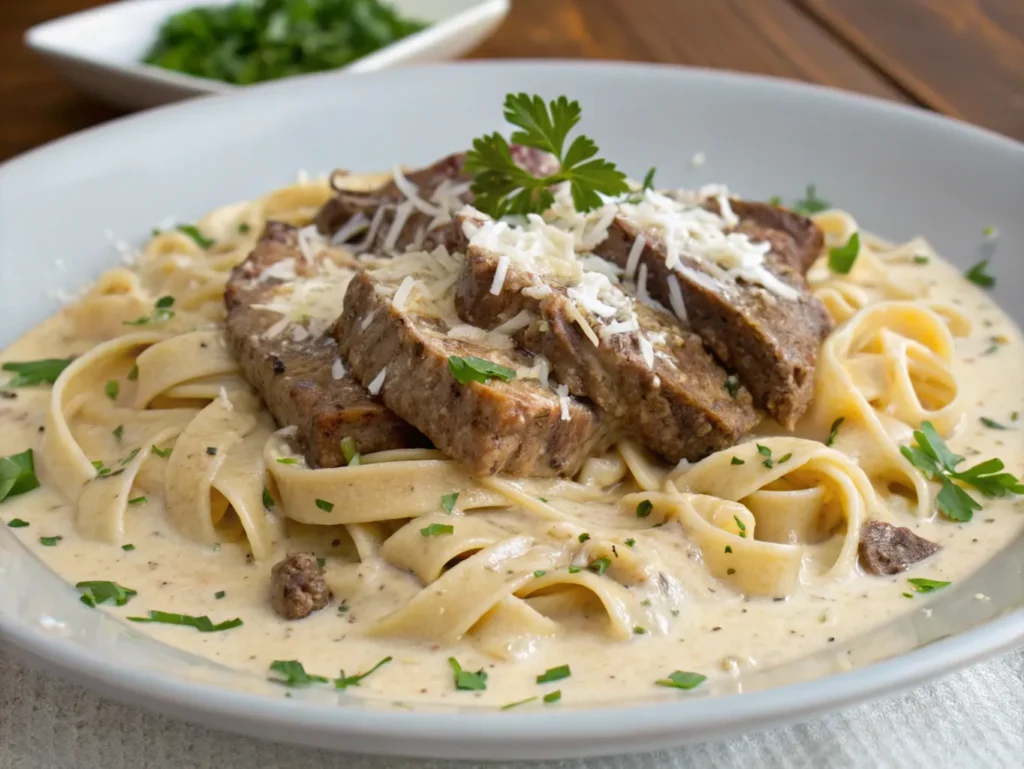
Infusing Cajun Flavors into the Cream Sauce
Balancing delicate cream with robust Cajun elements requires thoughtful technique. Begin by adding a measured portion of your prepared Cajun spice mix—start conservatively with one tablespoon, remembering that your spice-crusted steak contributes significant flavor later. For depth development, deglaze your steak-cooking skillet with a splash of white wine or chicken broth, scraping loose those caramelized bits before adding this concentrated flavor essence to your cream mixture.
- Add reserved Cajun spice blend incrementally, tasting between additions
- Use the same pan from steak cooking to capture fond (caramelized bits)
- Consider deglazing with white wine for complexity enhancement
- Balance aggressive heat with minimal honey if necessary
The sauce should simmer gently rather than boil after spice addition—boiling risks breaking your emulsion and producing graininess. Remove from heat before introducing Parmesan cheese, allowing residual warmth to melt it gradually while you whisk continuously.
Putting It All Together: The Ultimate Cajun Cream Steak Alfredo
Perfectly Cooked Pasta: The Foundation
Pasta selection significantly impacts your final creation. Traditional fettuccine offers ideal sauce-clinging surfaces, though linguine or pappardelle provide worthy alternatives. Whatever your selection, cook in abundantly salted water that “tastes like the sea”—this internal seasoning cannot be replicated after cooking.
Time your pasta deliberately to finish 1-2 minutes before package directions suggest. This undercooking ensures your pasta completes its journey in the sauce, absorbing flavors while releasing starches that further thicken and bind your creation. Before draining, capture at least one cup of cooking water—this starchy liquid provides invaluable sauce adjustment possibilities.
- Use generously salted water—approximately 1 tablespoon per quart
- Cook pasta until slightly firmer than al dente (1-2 minutes under package guidance)
- Reserve cooking water before draining
- Never rinse; those surface starches prove essential for sauce adhesion
Combining Components for Maximum Flavor
The culminating moment arrives—combining your elements into harmonious totality. Return your sauce to medium-low heat and introduce drained pasta directly from colander to sauce. Using tongs, gently lift and turn pasta repeatedly, allowing sauce penetration throughout.
Add your sliced steak along with any accumulated juices—these drippings contain concentrated flavor essences too precious to discard. Introduce prepared vegetables at this stage, continuing gentle tossing motions until everything reaches unified temperature. Should your sauce appear too thick, incorporate reserved pasta water tablespoon by tablespoon until reaching desired consistency.
Allow this magnificent creation to simmer together for 1-2 minutes—this brief marriage period allows flavor exchange between components while completing pasta cooking through residual heat.
- Return sauce to gentle heat before adding pasta directly
- Incorporate steak slices and collected juices completely
- Add prepared vegetables for color and textural contrast
- Adjust consistency thoughtfully with reserved pasta water
- Allow brief melding period before serving
Serving and Presentation Ideas
Plating Your Cajun Cream Steak Alfredo
Presentation elevates dining experiences from mere sustenance to memorable occasions. Begin with warmed plates—cold dishes rapidly cool creamy sauces, compromising both texture and flavor experiences. Create height through thoughtful arrangement; twirl pasta into a central mound using tongs against a ladle’s curved interior, then position steak strips artfully across the summit.
Finish with deliberate garnishing—fresh parsley adds vibrant color contrast while sliced green onions provide sharp flavor counterpoints against creamy backgrounds. A final light dusting of Cajun seasoning creates visually appealing color speckling while reinforcing flavor profiles.
Perfect Pairings and Side Dishes
Though undeniably complete alone, thoughtful accompaniments enhance your Cajun Cream Steak Alfredo experience. Crusty garlic bread provides textural contrast while efficiently collecting sauce remnants too precious to abandon. A simple arugula salad dressed with lemon vinaigrette offers refreshing palate breaks between rich bites.
For beverage pairings, consider the intensity of your specific creation. Versions featuring pronounced spice profiles pair beautifully with off-dry Riesling or Zinfandel, while milder interpretations complement Chardonnay or Pinot Noir admirably. Non-alcoholic alternatives include sparkling water with citrus or iced tea with complementary lemon.
Variations and Customizations
Seafood Additions for Surf and Turf Lovers
Transform your creation into spectacular surf-and-turf interpretation through thoughtful seafood incorporation. Large shrimp require mere minutes of cooking—add them during final sauce assembly, allowing residual heat to cook them until just pink and tender. For authentic Louisiana influence, consider crawfish tails added during final heating stages.
Adjusting the Spice Level
Heat tolerance varies dramatically among diners, making customization capabilities essential. Create accessible experiences through strategic adjustments:
- Reduce cayenne proportion within your Cajun blend for milder baseline
- Offer red pepper flakes tableside for individual adjustment
- Incorporate cooling elements like additional cream or sour cream dollops
- Provide hot sauce varieties for those seeking intensity escalation
Meal Prep and Storage Tips
For busy households, component preparation offers welcome convenience. Your homemade Cajun spice blend stores beautifully in airtight containers for months. Prepare vegetables up to two days ahead, storing them properly refrigerated in sealed containers. Even complete dishes reheat successfully when properly stored in airtight containers for up to three days.
When reheating, gentle stovetop warming with additional cream prevents separation while maintaining textural integrity. Avoid microwave reheating when possible, as uneven heating commonly creates sauce breakdown and texture degradation.
Health Considerations and Modifications
Lighter Versions of Cajun Cream Steak Alfredo
Traditional Cajun Cream Steak Alfredo celebrates indulgence, but modifications create lighter interpretations without sacrificing essential character. Consider replacing portions of heavy cream with half-and-half or whole milk whisked with minimal cornstarch. Reduced butter quantities supplemented with heart-healthy olive oil maintain richness while improving nutritional profiles.
Increasing vegetable proportions naturally reduces caloric density while contributing beneficial nutrients and fiber. Consider incorporating additional bell peppers, mushrooms, or fresh spinach during final assembly stages.
Gluten-Free and Dairy Alternatives
Dietary restrictions needn’t prevent enjoying this remarkable creation. Modern markets offer excellent gluten-free pasta alternatives—rice, corn, or chickpea varieties provide comparable textural experiences. For dairy sensitivity accommodations, consider coconut cream as heavy cream alternative, while several plant-based “cream cheese” products offer convincing performance in sauce applications.
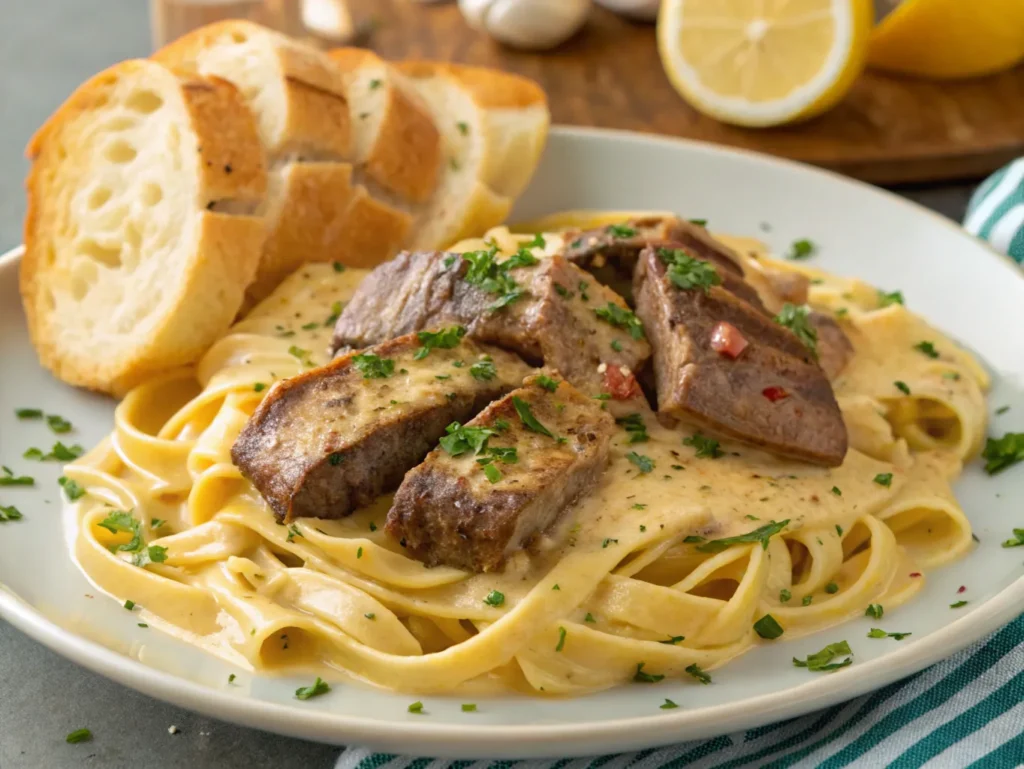
Conclusion: Mastering the Art of Cajun Cream Steak Alfredo
Creating exceptional Cajun Cream Steak Alfredo celebrates culinary creativity—the beautiful intersection where tradition meets innovation. This dish proves that seemingly disparate culinary traditions can create harmonious new experiences when approached with understanding and respect for foundational techniques.
Your kitchen becomes a playground for exploration—perhaps you’ll introduce andouille sausage alongside your steak, or experiment with different pasta shapes that capture sauce uniquely. Whatever your personal interpretations, remember that cooking ultimately celebrates connection—sharing lovingly prepared food with those who gather around your table.
We’d love to hear your experiences with this recipe! Share your creations on social media with #CajunCreamSteakAlfredo or comment below with your favorite variations. Questions about troubleshooting or ingredient substitutions? Our culinary team responds promptly to help ensure your success.
Ready for your next culinary adventure? Subscribe to our newsletter for weekly inspiration delivered directly to your inbox!
FAQ Section: Cajun Cream Steak Alfredo Questions Answered
Can I make Cajun Cream Steak Alfredo ahead of time?
Absolutely! You can prepare several components in advance. Mix your Cajun seasoning blend up to months ahead and store in an airtight container. Season your steak up to 8 hours before cooking, keeping it refrigerated. For the complete dish, prepare up to two days ahead, storing properly refrigerated, and reheat gently with a splash of fresh cream.
What’s the best cut of steak for Cajun Cream Steak Alfredo?
Ribeye and sirloin deliver outstanding results in Cajun Cream Steak Alfredo due to their ideal balance between tenderness and flavor depth. The key technique involves slicing thinly against the grain, which naturally tenderizes even slightly tougher cuts. Budget-conscious cooks might consider flank steak as an alternative when properly sliced.
How spicy is authentic Cajun Cream Steak Alfredo?
Traditional Cajun Cream Steak Alfredo offers moderate heat that enlivens without overwhelming. The beauty lies in customization—adjust cayenne proportions in your spice blend according to personal preference. Begin conservatively if uncertainty exists; you can always increase heat through additional spices during final preparation stages.
Can I substitute the cream in Cajun Cream Steak Alfredo for a lighter option?
While heavy cream creates unparalleled richness in Cajun Cream Steak Alfredo, lighter alternatives perform admirably. Half-and-half provides moderate richness reduction, while whole milk whisked with a tablespoon of cornstarch creates surprisingly satisfying results. These modifications reduce caloric density while maintaining essential creamy character.
What’s the difference between Cajun and Creole seasoning for Cream Steak Alfredo?
Cajun seasoning typically emphasizes paprika with pronounced heat elements, while Creole blends incorporate more dried herbs like thyme and oregano. Both work wonderfully in Cream Steak Alfredo applications, though they create subtly different flavor profiles. Cajun versions typically deliver more assertive heat, while Creole interpretations offer more herbaceous complexity.
How do I prevent my Cajun Cream Steak Alfredo sauce from breaking?
Maintaining smooth sauce integrity requires temperature awareness and proper technique. Never allow your sauce to boil after cheese addition—gentle heat prevents fat separation. Add cheese gradually off direct heat, allowing each addition to fully incorporate before continuing. Using freshly grated cheese rather than pre-packaged varieties significantly reduces separation risk due to absence of anti-caking agents.
What wine pairs best with Cajun Cream Steak Alfredo?
Medium-bodied reds like Zinfandel complement the robust flavors of Cajun Cream Steak Alfredo beautifully—their fruit-forward profiles balance spice elements while tannin structures stand up to richness. White wine enthusiasts should consider well-oaked Chardonnay, whose buttery qualities echo sauce elements while providing refreshing acidity contrast.
Have you given our recipe a try?
There are no reviews yet. Be the first one to write one.
